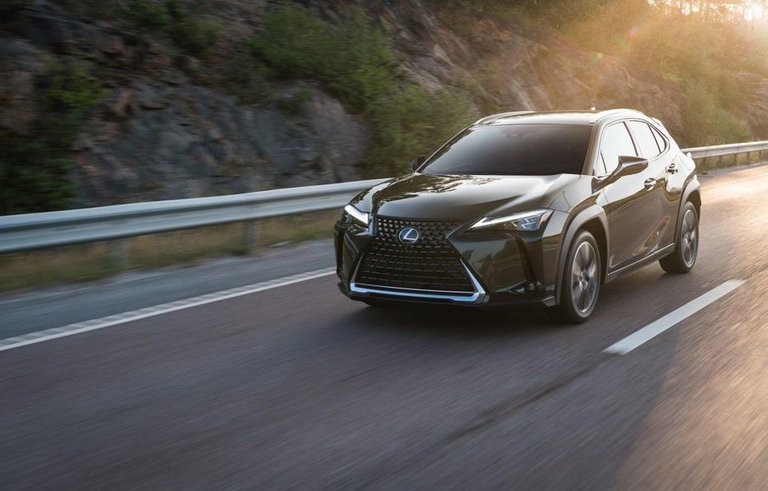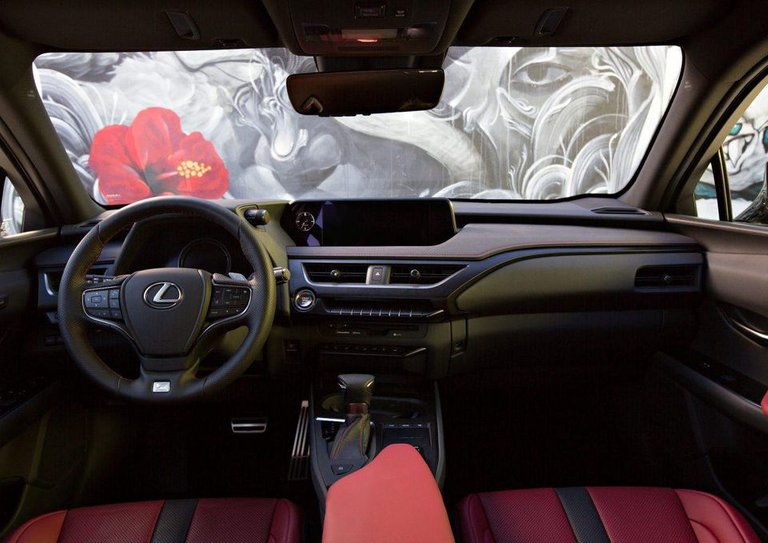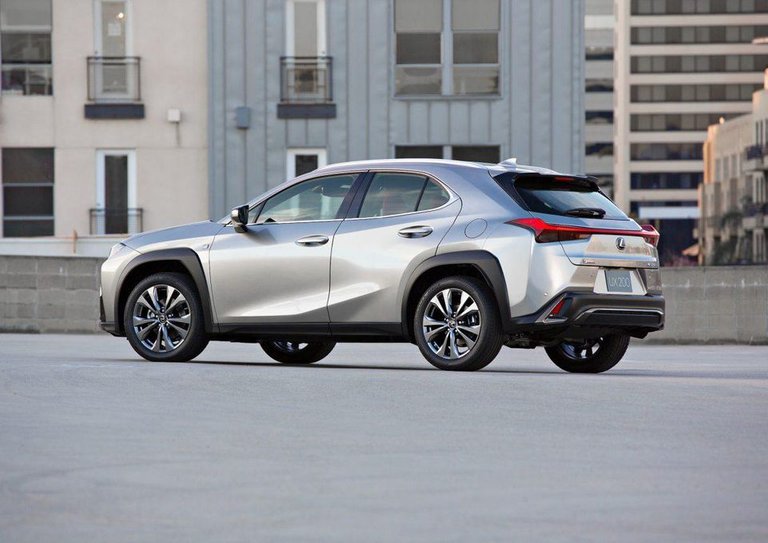The line between crossover SUVs and hatchbacks is very thin. The new 2019 Lexus UX 200 tiptoes along that line – but does it matter? When is a crossover not an SUV?
A bit of definition is in order. Traditionally, a sport utility vehicle (SUV) was a truck-based vehicle with body-on-frame construction, two or more rows of seating and an enclosed cargo compartment. SUVs have a command seating position, increased ground clearance, and often come with off-road capability, including all-wheel drive. The classic example is the Chevrolet Suburban. A hatchback is a car-based vehicle with a unibody, frameless build, and a liftgate that provides access to the cargo compartment and cabin. Like a traditional sedan, hatchbacks are low to the ground, and most get by with front-wheel drive, though all-wheel drive may be available. Think Volkswagen Golf.

Meet the 2019 Lexus UX 200.Photo (c) Lexus
A crossover vehicle takes some characteristics from Column A and some from Column B. Like an SUV, a crossover has a tall seating position, extended ground clearance and may have some off-road prowess. All-wheel drive is often available. Like a hatchback, a crossover vehicle is built without a frame as a unibody. A classic example is the Toyota RAV4. Crossovers are often called SUVs, as the traditional distinction has lost its meaning.
The lines are blurry. Some tall wagons, like the Subaru Outback, get classified as SUVs. As the market has shifted toward SUVs and crossovers and away from sedans and coupes, we’re seeing the term “crossover” in more advertising and marketing material than ever before.
With a lineup that includes the NX, RX, GX and LX, SUVs represent 70 percent of Lexus’ sales so far in 2018. Several competitors have recently added small crossover vehicles to their lineups, including the Infiniti QX30, Mercedes-Benz GLA, Volvo XC40, Audi Q3 and BMW X1.
So, it’s natural that Lexus would seek to extend its SUV/crossover lineup to include a small crossover vehicle – and not call it a hatchback.
According to Lexus, “UX” stands for “Urban Crossover.” The hope is that UX will attract new buyers to the brand – in particular, a micro-generation that Lexus calls “Xennials.” These aspirational figures, born in the mid-1980s, represent a population in the United States of about 25 million. They had “an analog childhood,” and are experiencing “a digital adulthood,” according to Lexus’s marketing gurus. UX is designed to cater to this unique character, with connected technology, efficiency and easy accessibility.

Lexus UX dashboard.Photo (c) Lexus
On the tech side, UX will have Apple CarPlay along with Lexus + Alexa, Lexus’ first integration of the Amazon artificial intelligence application. A head-up display will be available, and a seven-inch full-color display accessible via a new version of the Lexus touchpad will be standard. A 10.3-inch navigation display is available. The Lexus Enform Remote app will work with Google Assistant to give owners access to vehicle information and some functionality via enabled smartphones.
On the style side, UX doesn’t bother pretending to be an off-roader or flashing crossover credentials. Lexus’ spec sheet doesn’t even mention ground clearance, and the gasoline-only UX 200 is front-wheel drive only. The hybrid gasoline-electric UX 250h uses battery-electric power to drive its rear wheels in concert with the gasoline engine, which drives the front. The crossover is attractive, with Lexus’ signature spindle grille at the front and a nicely sleek body that finishes with a fast roofline. Fit and finish are at a high level, as with all Lexus products.
UX 200 gets a 2.0-liter inline four-cylinder gasoline engine with variable valve timing, tuned to produce 169 hp and 151 lb-ft of torque. The transmission is called a “10-speed Direct Shift CVT,” which is marketing talk for a continuously variable automatic transmission with paddle shifters. A CVT by any other name is still a CVT. It uses pulleys and belts to translate engine revolutions into wheel spin, rather than the stepped gearing in a traditional automatic or manual transmission. The result is greater efficiency, because the CVT can keep the engine in its ideal rev range, at the expense of some traditional driving thrills. This particular CVT is inoffensive, and does what it’s paid to do. For most drivers in the majority of situations, the transmission will be transparently functional. Only at highway speeds or in assertive driving situations will anyone wish for a different transmission choice.
Driving the new UX 200 in city and suburban settings, the new crossover shines. It is very maneuverable, thanks to its short 103.9-inch wheelbase, 177.0-inch overall length and 72.4-inch width. Thanks to solid construction and high-quality materials, it is whisper quiet on the road, and feels like a premium product worthy of the Lexus lineup.

Lexus UX rear 3/4 left.Photo (c) Lexus
Prices for the 2019 Lexus UX 200 will start at $32,000, and the UX 250h Hybrid will start at just $34,000. Expect to see UX 200 on showroom floors in December 2018, with the hybrid to follow in January 2019. Now, if Lexus can just find some Xennials.
Warning! This user is on my black list, likely as a known plagiarist, spammer or ID thief. Please be cautious with this post!
our discord. If you believe this is an error, please chat with us in the #cheetah-appeals channel in